This picture shows the nucleus of Comet Wild 2. The nucleus is shown from two different angles. Stardust took the pictures at different times as if flew by. Stardust was about 500 km (311 miles) from the nucleus when it took the picture on the left.
Click on image for full size
Images courtesy NASA/JPL.
Nucleus of Comet Wild 2
The picture on this page shows the best views ever of the nucleus of a
comet. It shows two pictures of the comet's nucleus that were taken at
slightly different times. The pictures were taken by a spacecraft named
Stardust.
Stardust flew by a comet named Wild
2 in January 2004. Stardust was a
little bit further away from the comet when it took these pictures than
the Space Shuttle is from Earth when it is in orbit.
The nucleus of a comet is a lump of ice and dust. The nucleus of Comet
Wild 2 is about five
kilometers (3.1 miles) wide. That may seem pretty big to you, but the nucleus
is very small compared to the rest of the comet. When we see a bright comet
from Earth, we are looking at the much larger coma and tails of the comet.
You might also be interested in:
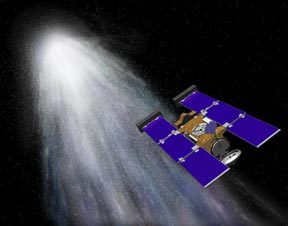
Stardust is the name of a space mission that studied a comet. NASA's Stardust spacecraft flew past a comet named Wild 2 in January 2004. During its flyby Stardust collected some dust particles from the
...more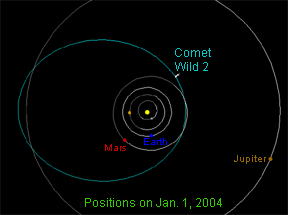
Comet Wild 2 is named after the scientist who discovered it. Paul Wild is an astronomer from Switzerland who discovered the comet in January 1978. Wild 2 is pronounced "Vilt 2". The comet orbits the Sun
...more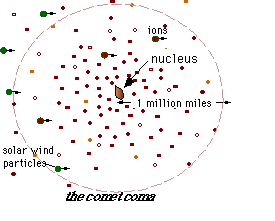
As the ices of the comet nucleus evaporate, they expand rapidly into a large cloud around the central part of the comet. This cloud, called the coma, is the atmosphere of the comet and can extend for millions
...more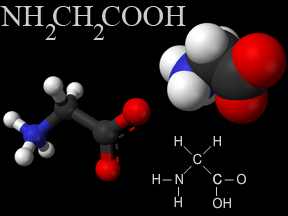
Scientists have found a type of amino acid in a sample returned from a comet. Amino acids are the building-blocks of proteins. Proteins are one of the most important types of molecules in living creatures.
...more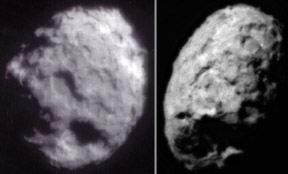
The picture on this page shows the best views ever of the nucleus of a comet. It shows two pictures of the comet's nucleus that were taken at slightly different times. The pictures were taken by a spacecraft
...more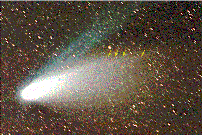
Hale-Bopp continues to offer new surprises as two astronomers report of their study of the comet. Using the Hubble Space Telescope and the International Ultraviolet Explorer, the astronomers did a year-long
...more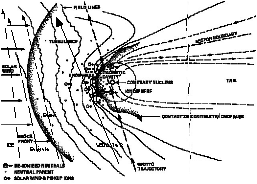
Six spacecraft flew by Halley's comet in 1986. There were two spacecraft launched from Japan, Suisei and Sakigake, and two from the Soviet Union, Vega 1 & 2. One spacecraft, ICE, from the United States
...more














